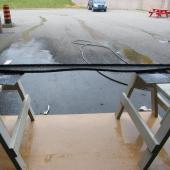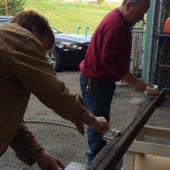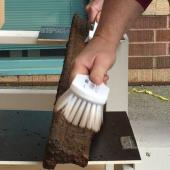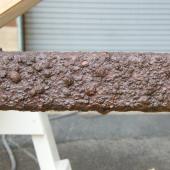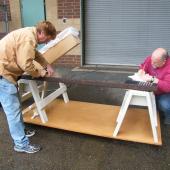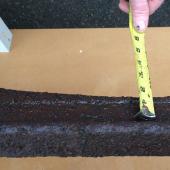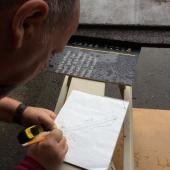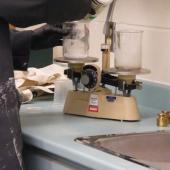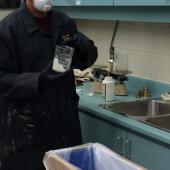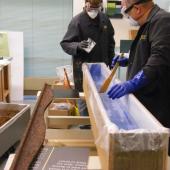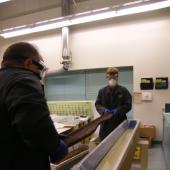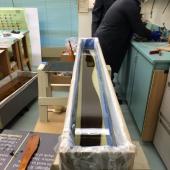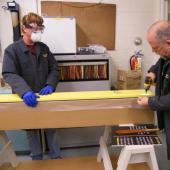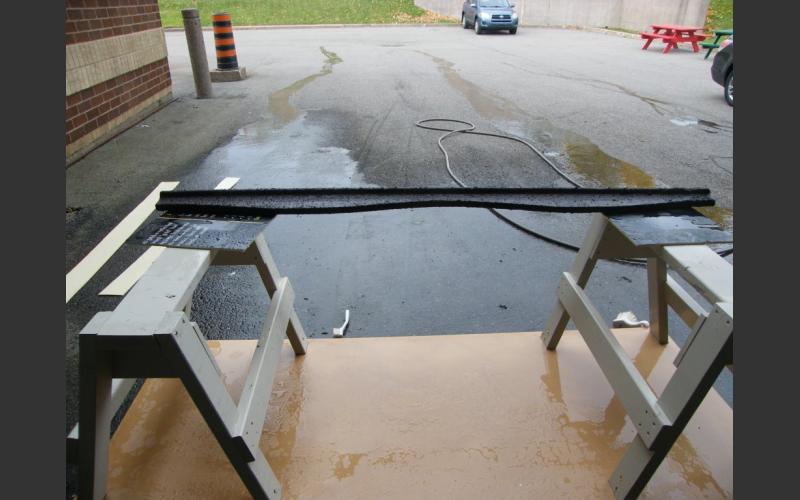
A 74” fish belly rail is being prepared for treatment to gently clean and preserve it.
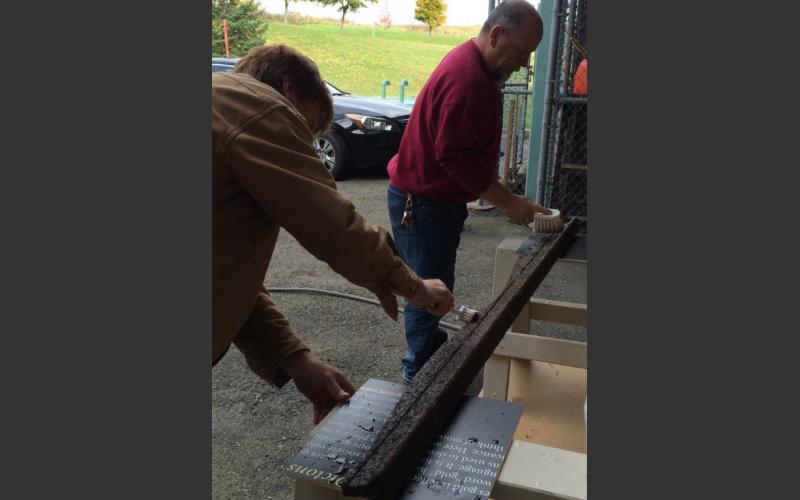
When it was in use in the 1800s, curves along the bottom of this kind of rail prevented the brittle cast iron from crumbling under the weight of locomotives that ran on it.

Brushes are used to provide a gentle cleaning of loose dirt and debris prior to a chemical treatment.
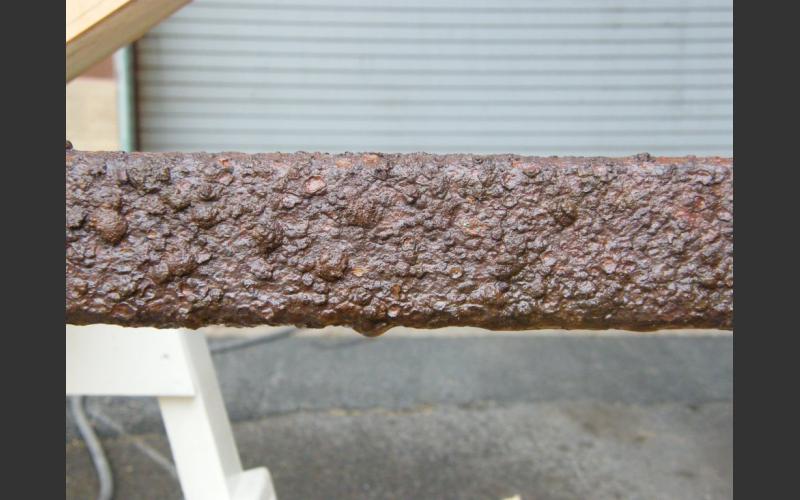
This is what the surface of the rail looks like now. We are going to try to improve it without damaging it.
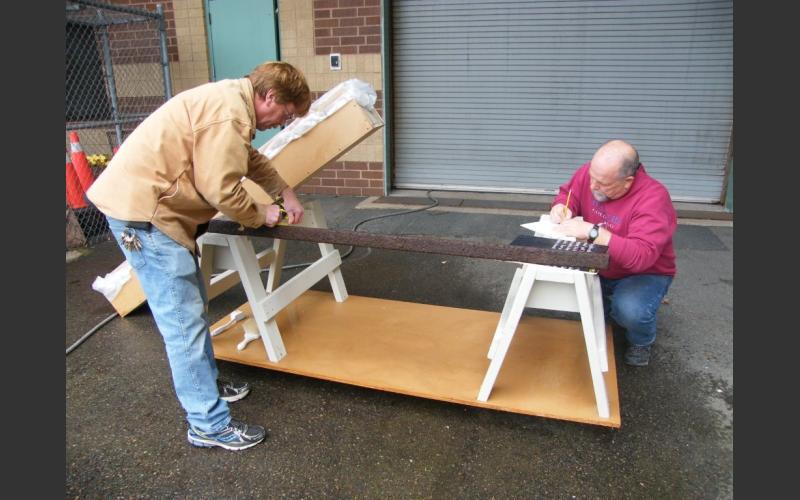
Before starting treatment, the rail is fully measured.
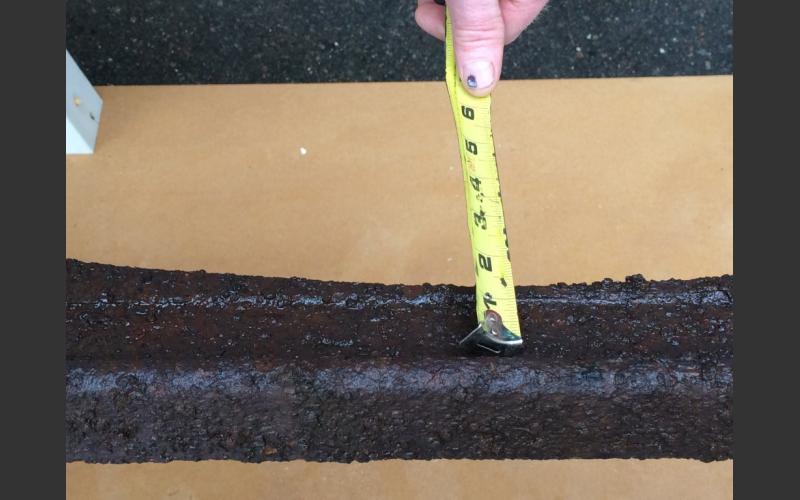
Every dimension is recorded to help us try to determine the age of the rail.

A sketch is useful to understand the measurements we are recording.
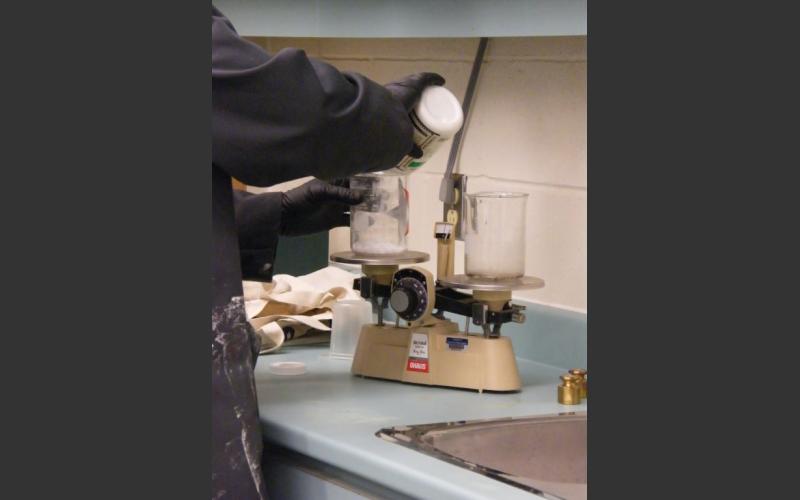
A conservator has instructed us to use sodium hydroxide pellets in a specific amount to create a soaking bath.
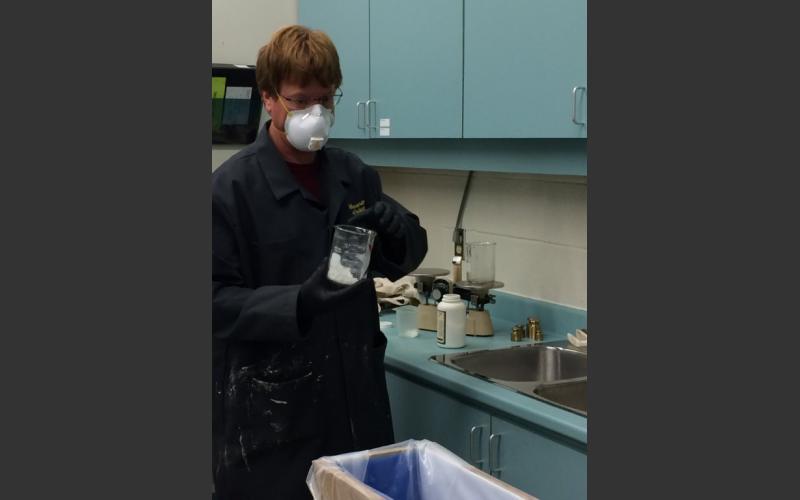
We are handling a caustic substance and so must take precautions.
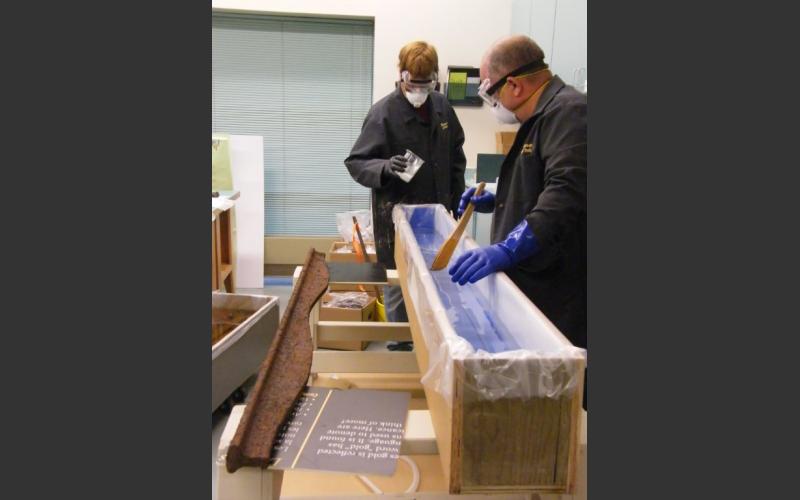
The pellets are mixed with distilled water in the lined box to create a solution.
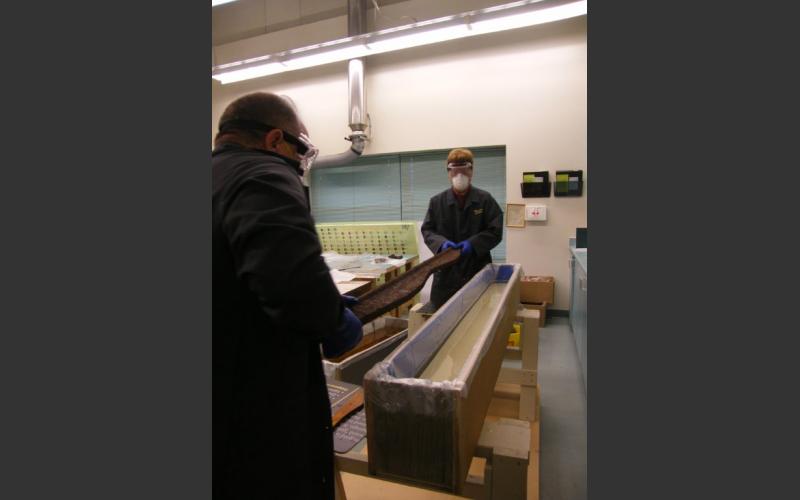
The fish belly rail is gently put into the solution.
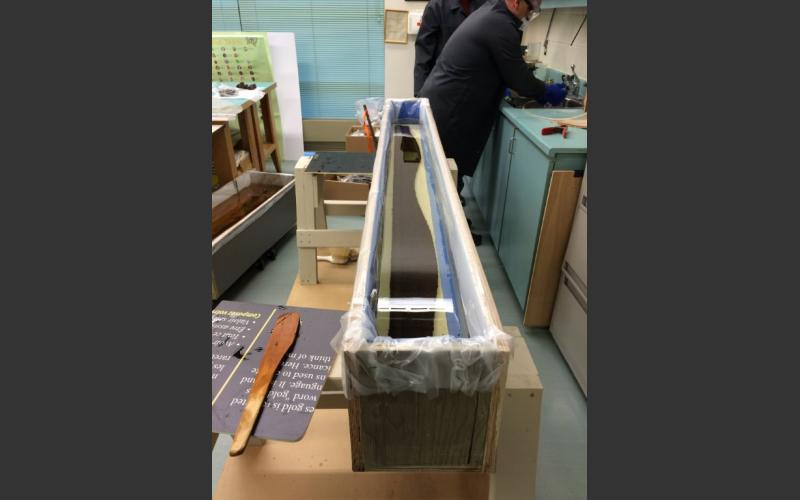
The solution will be changed every 4 weeks for 6 months or more.
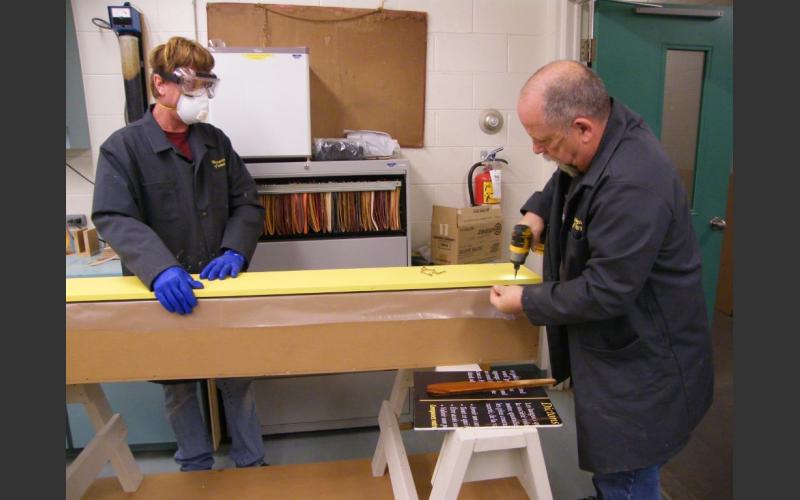
The box is closed tightly to prevent the odor (like rotten eggs) from escaping once the chemical starts to work.













